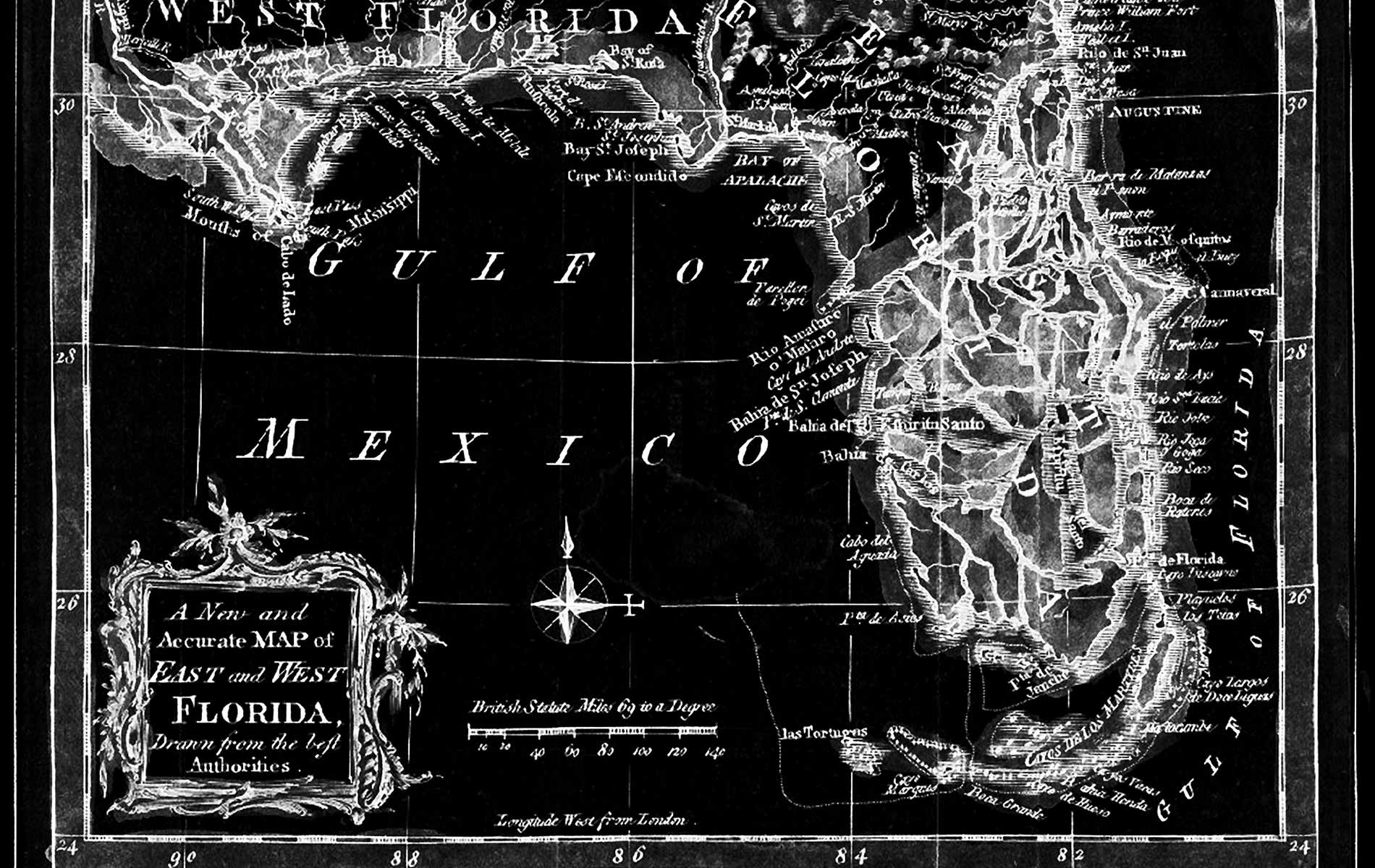
vie-magazine-pensacola-anniversary
Pensacola’s 450th Celebration
Story & Photos By Brenda Rees
For 450 days in May 2008 through August 2009, the city of Pensacola will take center stage, planning events to communicate its significant milestone.
History is something I have always gravitated toward – the battles, the stories of the past, the treasures buried like a time capsule waiting to be unearthed by archaeologists, eager students, teachers or historians like myself. When traveling along the Northwest Florida coast, as I often do, I frequently reflect on the strong historical and environmental bonds rooted in our region. This year, I am thrilled to help the historical heart of Northwest Florida celebrate her 450th birthday. For 450 days, beginning in May 2008 through August 2009, the city of Pensacola will take center stage planning events to commemorate its significant milestone. As the historical centerpiece of Northwest Florida’s Emerald Coast, Pensacola sets a sparkling example of blending the best of worlds with brilliant white sand beaches, relaxing Southern culture, coastal scrub and maritime forests, vast pine ridges, rolling interior, and authentic and significant Florida history.
My admiration for Pensacola and the Emerald Coast dates back, figuratively, to Florida’s early territorial days and the Civil War. My great-great-grandfather, James Hamilton Wentworth, who fought in and was captured at the famous Gettysburg battle, eventually ended up in Pensacola. His son, T.T. Wentworth, Sr., put roots down in Pensacola Beach. Then his grandson, T.T. Wentworth, Jr., founded two museums: a state museum in Pensacola and a museum in Ensley. My maternal grandmother, Mary Wentworth Jackson of Pensacola, and her husband, Jack Jackson, owned the Jackson Motel in DeFuniak Springs. Several other relatives made names for themselves in Tallahassee, including William T. Cash, a Florida legislator and the first state librarian. In addition, my mother, of course, was a proud native of Pensacola. It is my hope that, with Pensacola’s 450th birthday celebration, the world will come to know the real story of this beautiful and historic Emerald Coast area.
Not many people know that West Florida was the 14th British colony in North America and the city of Pensacola served as the capital. People are amazed to discover that Pensacola is actually older than the acclaimed “oldest city” of St. Augustine, Florida. In my lectures, I inform groups of these little-known facts – including that Walton County, named after Pensacola’s and Florida’s territorial leader George Walton, Jr., is approaching its very own 200th birthday.
[double_column_left]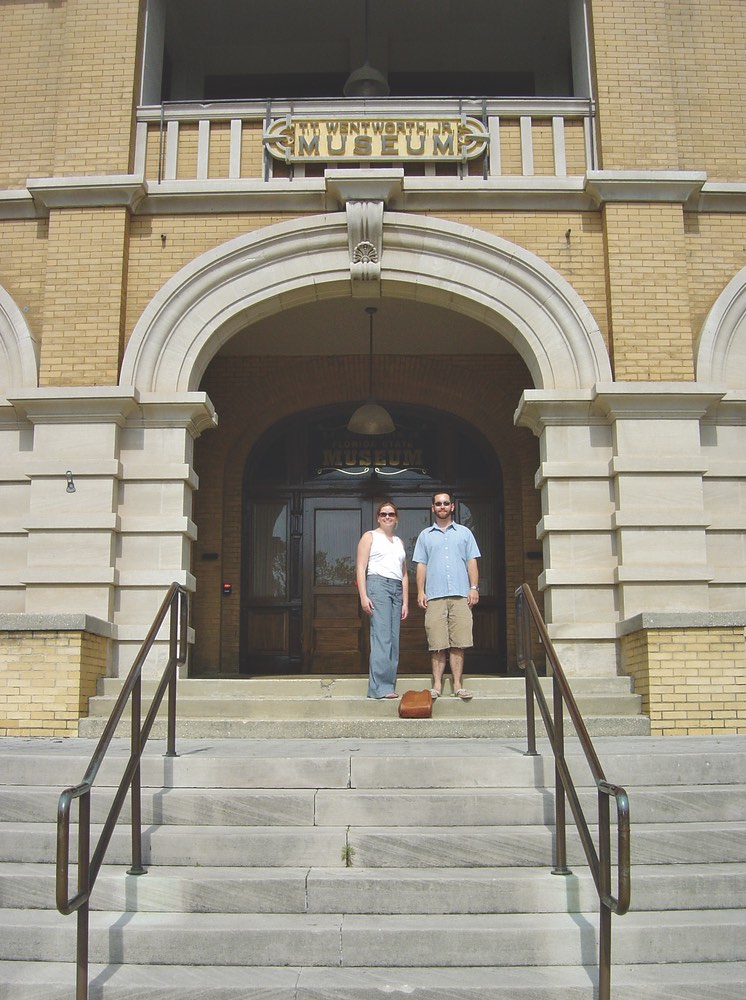
Amanda Schuette and Matt Jones from Walton County at the T.T. Wentworth Jr. Museum
The historical story of Pensacola began thousands of years ago and traces of environmental treasures have developed over the ages. While Miami and Tampa were underwater 100,000 years ago, the shores of Northwest Florida probably glistened unspoiled and untouched due to their high elevation. Britton Hill, near Paxton off Highway 331 in Walton County, boasts the state’s highest elevation at 345 feet above sea level. It is considered the “lowest high” in America.
Perhaps it is because of the high elevation and natural benefits that native peoples and their ancient middens are found throughout Northwest Florida. New evidence shows native peoples’ presence here more than 25,000 years ago. Native peoples lived here when Panfilo de Narvaez and his ill-fated exploration trip passed the Emerald Coast from St. Marks, Florida on the way to Mexico in 1528. They lived here when Tristan de Luna landed at Pensacola in 1559. Still they were here on this coastal land when Andrew Jackson arrived in Pensacola to set up the new territory of Florida in 1821.
[/double_column_right]Originally named Santa Maria Filipina, Pensacola was founded in 1559 by the Spanish conquistador Tristan de Luna. Proof of this visit is evident with samples of Aztec pottery and an anchor from the Tristan de Luna ship now displayed at the T.T. Wentworth, Jr. Florida State Museum in Pensacola. A second ship from this expedition was discovered nearby and partially excavated in 2007. Pensacola suffered colonizing mishaps along with a destructive hurricane that left the Luna colony abandoned in 1561.
In 1693 Pensacola’s bay was rechristened Bahia de Santa Maria de Galve. Because of its superior harbor, it was suggested that Pensacola replace St. Augustine as La Florida’s capital; however, this did not happen. In 1698, Andres de Arriola was appointed as Pensacola’s first Spanish governor and the colony was permanently settled.
Historically, St. Augustine, founded in 1565, gets the nod for longest continuous city within the current Florida border. However, very few know that Pensacola, established in 1559, is older than Jamestown, 1607, or Plymouth, 1620. There were earlier settlements within the original borders of Florida, which was much larger than today. Lucas Vazques de Ayllon established San Miguel de Gualdape in 1526 on what is now the Georgia coast at Sapelo Sound. The “La Florida” map by Geronimo de Chavez published in Ortelius’ Atlas of the World in 1584 shows an expansive Florida border that included areas of modern-day Texas, Mexico and up to Newfoundland. I often tell visitors from neighboring states, “Welcome home to Florida.”
During America’s fight for independence in 1778, British soldiers marched between Pensacola and St. Augustine, capitals of Great Britain’s 14th and 15th colonies. Not only were the sands shifting along the Northwest Florida shore, but the borders and countries were shifting as well. Pensacola is also known by its nickname “City of Five Flags,” as it was claimed by Spain, France, Great Britain, the United States and the Confederate States of America.
[double_column_left][/double_column_left] [double_column_right]Pensacola suffered colonizing mishaps along with a destructive hurricane that left the Luna colony abandoned in 1561.
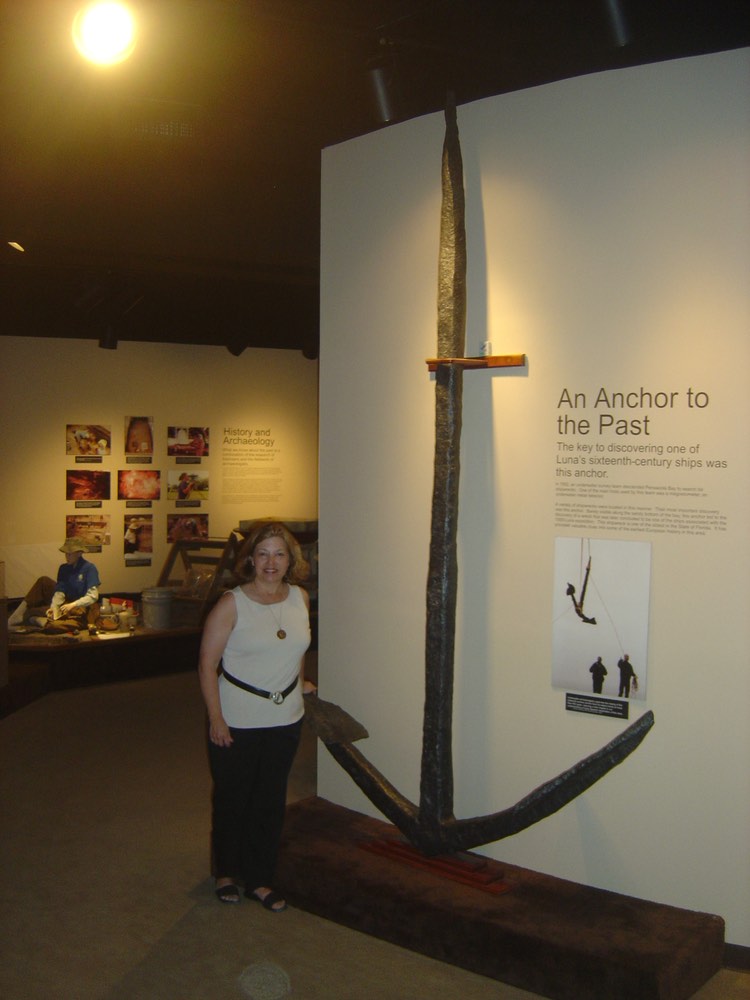
An Anchor from the Tristan de Luna ship displayed at the T.T. Wentworth Jr. Florida State Museum in Pensacola.
The United States finally wrested Florida from Spain and established a territory with Andrew Jackson serving as Governor of the Floridas – West Florida and East Florida. One of Jackson’s first acts was to form the counties. In 1821, Escambia and St. Johns were the first two counties established in the state. All present counties of current Northwest Florida and the Emerald Coast were once part of Escambia County and had Pensacola as their county seat. New counties subsequently formed to control the legislature. West Florida interests prevailed in keeping the most counties and control of the Florida legislature until the Voting Rights Act as amended in 1965.
Florida did not suit Jackson’s personal or political aspirations, and after only four months, he left Pensacola and returned to Tennessee. He appointed his Secretary for West Florida, George Walton, Jr., as Acting Governor. According to Jackson’s instructions, official documents and records from the East Florida Acting Governor were to pass through Acting Governor Walton of Pensacola and West Florida.
George Walton, Jr. and his family lived in Pensacola from 1821 until 1835. Walton again served as Secretary of State for Florida after William Pope Duval was selected as Governor. He continued as secretary until 1826. When Richard K. Call became governor of Florida, Walton decided to leave Pensacola and Florida for Mobile, Alabama.
Walton’s family was distinguished and well known. His father, George Walton of Georgia, was a signer of the Declaration of Independence. The senior Walton died in 1804, and it was only to be with her son that Dorothy Walton moved to Pensacola, where she died and was buried in St. Michael’s Cemetery. While his family resided in Pensacola, George Walton, Jr. spent much time in Tallahassee. The Walton House, where they reportedly lived, is in the historic district of Pensacola. T.T. Wentworth, Jr. owned the house and deeded it to Pensacola for $1.
Considered a great belle of the South, Octavia Walton Le Vert was the daughter of George Walton, Jr. As a Pensacola resident, she was amazingly well traveled, accomplished, and the star of her time. Le Vert’s travel journal might rival some of the most interesting in history. During her 1833 debut trip to Washington, D.C. and other locales, she met and began a lifelong friendship with Washington Irving, who referred to Octavia as, “One who occurs but once in an empire;” Edgar Allan Poe wrote a poem for her after meeting on a trip to Baltimore; she was received by Queen Victoria and by Pope Pius IX during a trip to Europe in 1853; and in 1855 she was an official representative to the Paris World Exposition. Octavia’s other accomplishments include serving on a committee with Abraham Lincoln; speaking five languages; being credited for naming Tallahassee; and in 1857, for authoring Souvenirs of Travel, one of the early tourist guidebooks written by a Floridian, detailing her European visits.
Octavia left Pensacola in 1835 and moved to Mobile where she married Dr. Henry Levert. (Always an independent woman, she spelled her name Le Vert.) After the Civil War, she returned to her place of birth, Augusta, Georgia. Her father, mother, husband, brother and three of her five children had all died.
[double_column_left]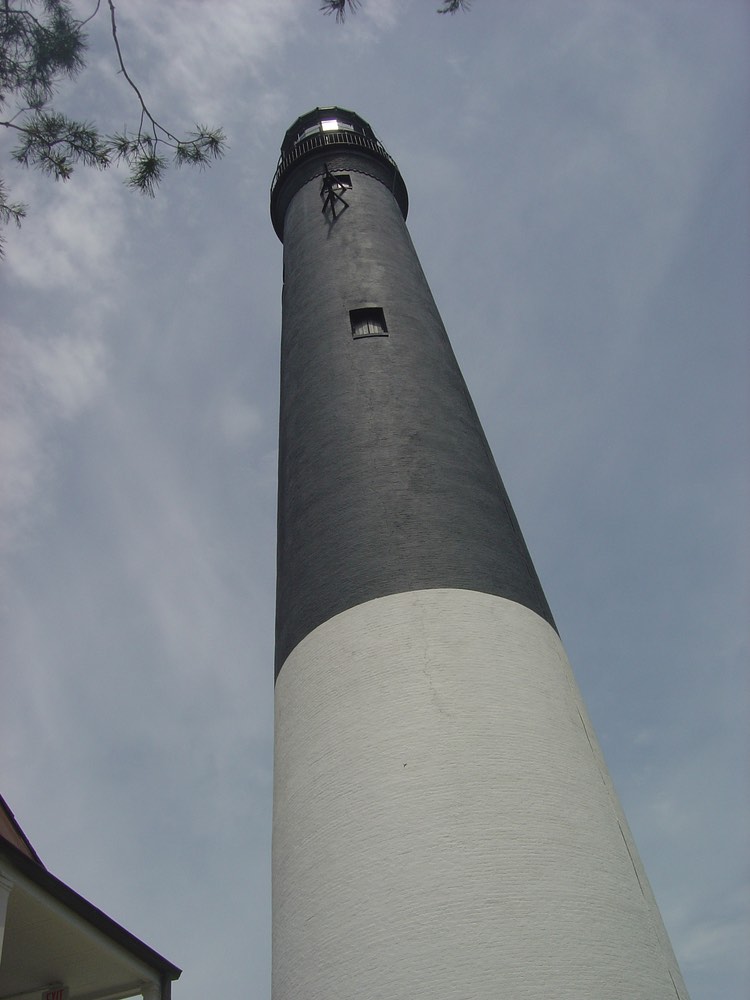
The original Pensacola lighthouse, built in 1824.
[/double_column_right]Pensacola has an abundance of historical treasures and there are too many to discuss extensively…
Floridians should know the stories of George and Octavia Walton, but most do not. Pensacola and West Florida history is often neglected. This long neglect, resulting in the current “Disney World-influenced” version of Florida’s history, has numerous reasons. One such reason was that during Andrew Jackson’s tenure, he sent many of the Spanish back to Cuba; the ship carrying them and many West Florida records was attacked by pirates and sunk.
Next, Charles Vignoles admits in his 1823 book touting the new territory, Observations Upon The Floridas, that he slighted information on West Florida and lobbied to get West Florida to join Alabama. West Florida interests eventually won out in this epic East Florida/St. Augustine – West Florida/Pensacola battle. Educational and travel opportunities were superior in West Florida during the 1880s. One such event was the Chautauqua, begun in 1885 in DeFuniak Springs. In its heyday, it attracted 5,000 visitors by rail from Pensacola and across the nation. This festival’s heritage is still enjoyed around Lake DeFuniak, one of the amazing naturally round lakes in the world.
Pensacola has an abundance of historical treasures and there are too many to discuss extensively in one magazine article, but I thought there were a few worth noting. The original Pensacola Lighthouse, built in 1824, was the first lighthouse on the Gulf Coast and was built the same year Walton County was founded. The marker placed in 2004 by the National Society, Colonial Dames XVII Century, Fort San Carlos Chapter, Pensacola, Florida, states that the current lighthouse was lit in 1859 and is still in use.
Early Florida land developers and traders are remembered by a reconstructed miniature house and Indian trading post built by William Panton of Panton, Leslie and Company. Alexander McGillivray was buried here until his sister moved him to Alabama per Dr. Randall Broxton, Pensacola Junior College history professor. According to the plaque erected in 1935 by the Pensacola Historical Society, McGillivray was made Chief of the Creek Nation in 1776, commissioned a British colonel in 1778, a Spanish agent in 1784, and a U.S. Brigadier General in 1790, and died in Pensacola, Florida in 1798. From the historic district, you drive by this house off Main Street on your way to the lighthouse and world-class National Museum of Naval Aviation and IMAX Theater.
[double_column_left]Pensacola, was also known for the West Florida Railroad, and brick and timber industries, and would become known as the “Cradle of Naval Aviation.” Pensacola’s prosperity has been linked to the military for nearly four centuries. The West Florida Historic Preservation, Inc. and the University of West Florida have teamed up to provide family fun and exhibits of numerous Pensacola historical highlights at the Historic Pensacola Village and T.T. Wentworth, Jr. Florida State Museum. Plan a trip today to see these special jewels along with the Seville Historic District, Fort Pickens, Christ Church, the Pensacola Museum of Art, the Blue Angels, the brilliant Pensacola Beach sign, and many excellent restaurants and shops.
[/double_column_left] [double_column_right]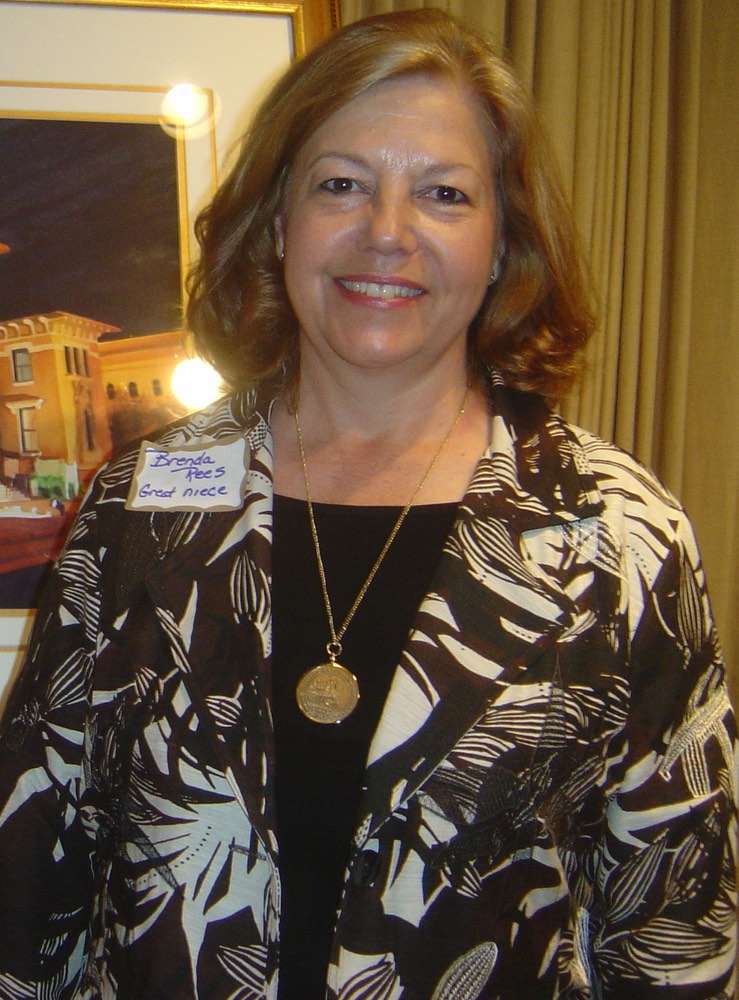
Brenda Rees is a local historian and Walton County native.
Thousands of individuals from Pensacola made and influenced Florida history. Enjoy reading, learning, and viewing more about Pensacola during this special 450th celebration. You may never read the Legend of Sleepy Hollow or an Edgar Allan Poe poem again without thinking of Pensacola, Octavia Walton Le Vert or the Emerald Coast. The beautiful sand may sparkle even more as you relax along the shimmering emerald shore. Welcome guests to your home along the Emerald Coast with renewed excitement. They may be long-lost Floridians.
— V —
Brenda Rees is a local historian, Walton County native, holds a Florida Master Naturalist certificate, and certified by the South Walton Tourist Development Council presenting environmental and history programs through her business, Shaping Florida. During the 2008 Florida Chautauqua, she portrayed Octavia Walton Le Vert. Rees holds degrees from Sam Houston State University and Texas A&M University and attended University of West Florida.
Share This Story!
KEEP UP WITH THE LATEST STORIES FROM VIE
















































































































































